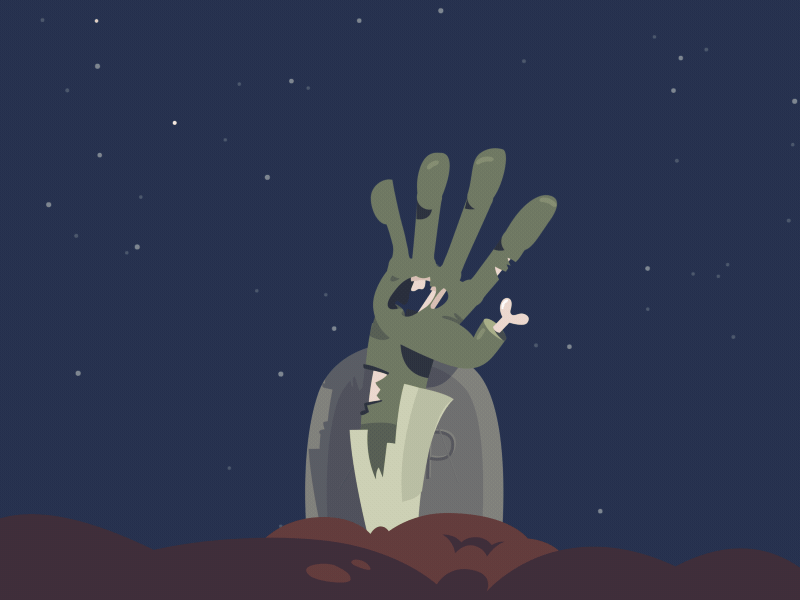PM05: Managing a Zombie Product 🧟
Do you own failed or abandoned products? Here are a three proven strategies to deal with "zombie" products.
Heard of Zombie products?
While everyone in my LinkedIn feed obsesses over identifying new opportunities and building new solutions, there is something that holds back most of the product managers: stuff that failed.
Here is 5 types of failed stuff that you may need to deal with as a PM:
[Obsolete] Feature/product that became irrelevant, because the problem became irrelevant
[Non-Viable] Feature/product that never was relevant, because the problem it solves never existed
[Just Bad] Feature/product that never was relevant, because it didn’t solve the problem
[Looser] Feature/product unused because of a better alternative or competitive solution
[Castaway] Feature/product that don’t fit your company strategy anymore
These product/market misfits are the zombies that haunt PM who inherited them.
Why should you even care?
You might not even realize yet, but if you own any kind of zombie product, they drain your and your team's resources. In the best case there is no active users left, and your only expense if the cost of infrastructure. In the worst case, there is a bunch of active and angry users, who either have no alternative or for some reason are loyal to your little zombie despite all the negligence from the product team. They want more features and bug fixes, but you have no budget for that. You'll have to manage escalations, triage bugs, and maintain the infrastructure. It will exhaust and slow down the whole team.
What should you do?
Sell it
In the real world, Looser and Castaway zombie products can be sold, if there is an existing active user base, or unique tech. For internal PMs, things are more complicated. Finding an organization with overlapping interests is possible, but teams often operate on tight budgets. Unless the product has unique technology, data, or solves the exact same problem that the other org wants to solve, it will be hard to convince anyone to acquire it.
Furthermore, consider developer morale. Most engineers I worked with want to build new, meaningful things and aren't interested in taking over old products. If the leadership tells them to take over a tech product from another team, but they might end up rewriting it from scratch. This kind of organizational behavior isn’t uncommon, because usually speed matters and rewarded more, so the Not invented here syndrome kicks in.
Revive it
You can try to build another business case and try to revive a zombie. Unless you happen to have the right data and anecdotes to convince the leadership to invest in the revival, you first need to invest a ton of valuable PM hours to conduct a discovery for an opportunity that is forgotten and/or abandoned by your leadership. Usually though, internal PMs have a lot of other things on the radar, which ARE important for the leadership, that can’t be screwed up.
Kill it
Killing zombie products is often the best solution, it’s also romantisized with a term product “sunsetting”. Sunsetting Obsolete, Non-viable and Bad products is likely a matter of shutting down the infrastructure and deprecating the code.
Looser and Castaway products might have thousands of users with critical jobs to be done depending on them.
Close signups
If you haven’t done so yet, remove the option to signup.
For internal products, creating a self-service or manager approval permission group requiring a business justification to continue using the product. This way, you have more control over the user base and a better understanding of the processes that depend on your tool. This strategy is pretty brutal but effective.
Give the users bad news well in advance
Remember that they still wait for you to fix the bugs, so this news will not be perceived well. You need to rip off the band aid. Give them long enough notice period to allow to go through all the stages of loss, and to prepare. Increase the cadence of communication proportionally to the remaining product lifetime.
Invest in offboarding
Make sure you create solid means to offboard, such as data export or possibly a migration to an alternative solution if it exists. This comes with the engineering cost, so make sure you align it with the leadership, your development partner and consider in the plan.
To recap:
Zombie products are active products that the company no longer wishes to invest in.
These products drain the product team's energy and bandwidth.
There are three ways to deal with them: 1) transfer ownership; 2) revive; 3) kill.
Although killing the product is often the best option, it should be done carefully. Over-communicate and provide a clear way out for the users.
🙋♂️Pssst I need your help!
I’m doing a little research on correlation between creating content on professional topics with on the job performance.
Please take this 2 minute survey and immediately improve your karma. I will share my findings in one of the future Product Math posts.




